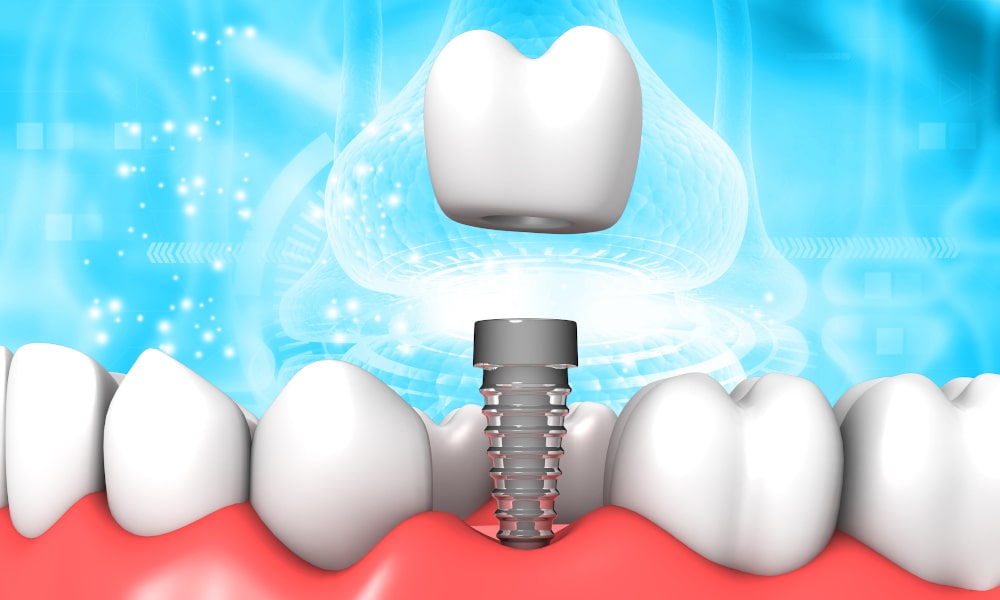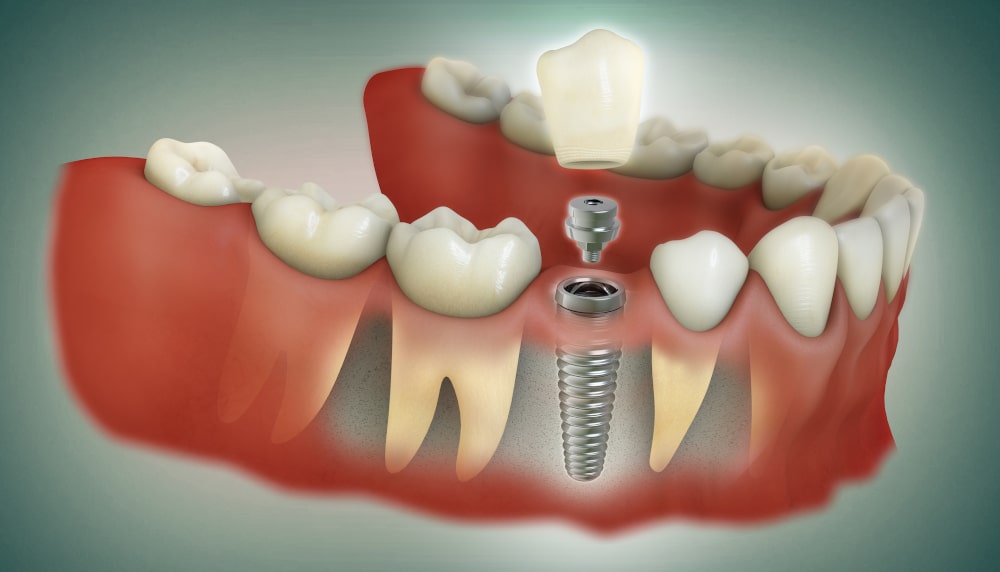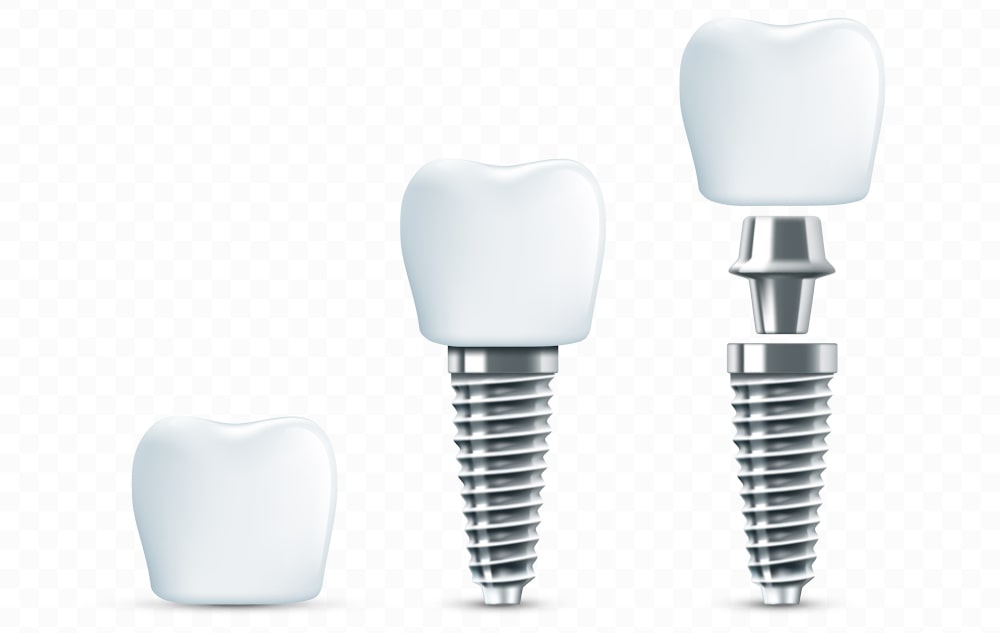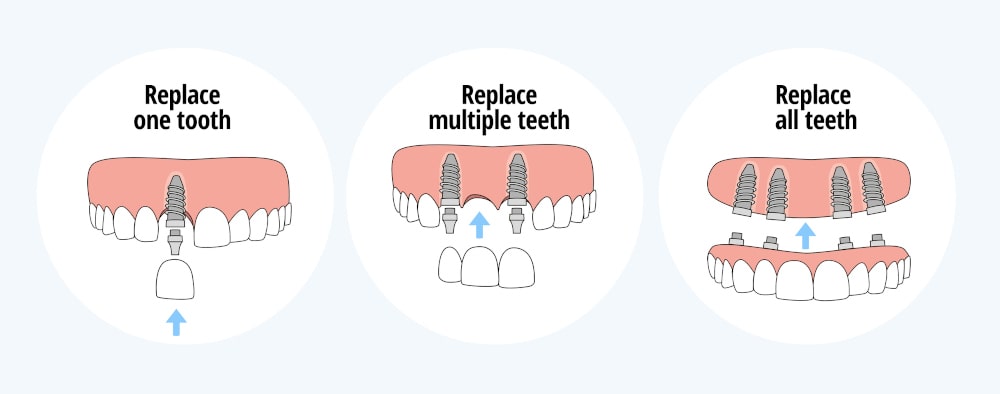
Key Takeaways
- Prices differ significantly between provinces, with Ontario and British Columbia often on the higher end.
- Dental implant pricing varies due to factors such as material quality, the need for bone grafts, the number of implants, and the dentist's level of expertise.
- Insurance coverage for implants in Canada is generally limited, with most private plans offering partial coverage only.
- Expert insights and up-to-date research are crucial for making informed decisions on implant procedures.
What is the average cost of dental implants in Canada?
Start with this: walk into any dental clinic in Canada and ask about dental implants — you’re not getting a flat rate. Why? Because implant pricing is more comparable to buying a car than buying a cup of coffee. Let’s break down what Canadians can expect when it comes to costs.
National Average Pricing
The national average cost for a single dental implant (including implant, abutment, and crown) typically ranges from CAD $3,000 to $6,000. But that number can increase significantly with additional procedures, such as bone grafts or sinus lifts.
| Type of Procedure | Average Cost (CAD) |
|---|---|
| Single Tooth Implant | $3,000 - $6,000 |
| Implant-Supported Bridge (3-Unit) | $6,000 - $12,000 |
| Full Arch with All-on-4 Implants | $25,000 - $35,000 (per arch) |
| Bone Grafting (if needed) | $500 - $2,500 |
| Sinus Lift | $1,500 - $3,000 |
Public vs. Private Options
Public healthcare in Canada does not cover dental implants. Provincial health plans generally cover only medically necessary procedures. Therefore, most Canadians rely on private clinics and financing options.
Why do dental implant prices vary so widely?
It’s a fair question — and one that frustrates many patients. Implant prices can seem inconsistent even between neighbouring clinics. So, what’s behind the discrepancy?
Factor 1: Materials and Brand
Implants are not all created equal. Premium brands such as Straumann or Nobel Biocare offer implants with higher-grade titanium and longer clinical track records. These often cost more but may provide better longevity.
Factor 2: Number of Implants
A single implant is vastly different from a full-mouth All-on-4 procedure:
- Single Tooth: One implant, one abutment, one crown.
- Multiple Teeth: Requires more material, more surgical time, and potentially custom lab work.
Factor 3: Bone Grafting and Additional Procedures
If bone loss is present, a graft may be required before the implant can be placed. These procedures increase costs significantly and add time to treatment plans.
Factor 4: Dentist’s Experience and Location
Highly experienced surgeons often charge more, but they may also reduce the likelihood of complications. Geographic location also plays a role, with urban clinics charging more due to operating costs.
"Dental implant procedures should be tailored individually. We see wide variability in needs — even among patients seeking the same number of implants." — Dr. James C.H. Ko, DDS
Factors Influencing Price
| Factor | Description | Cost Impact |
|---|---|---|
| Implant Material Quality | Premium vs. generic brands | + $300 - $800 |
| Number of Implants | One vs. several implants | + $3,000+ |
| Bone Graft or Sinus Lift | Required for weak or insufficient bone | + $500 - $3,000 |
| Surgeon’s Experience | Specialist vs. general dentist | Variable |
| Geographic Location | Urban vs. rural clinics | Variable |

Does insurance cover dental implants in Canada?
This is where things get tricky. Dental implants straddle a line between cosmetic and medically necessary treatment, and most insurance providers treat them as elective. Let’s explore the landscape.
Private Insurance Plans
Most private dental insurance plans in Canada, whether purchased individually or provided by employers, offer limited coverage for dental implants. Often, they’ll cover the crown portion but not the surgical implant itself.
Plans typically include:
- Annual caps are often between $1,000 $2,500
- Coverage of 50% for eligible services
- Waiting periods for major procedures
Employer-Sponsored Benefits
Some extended health plans may offer better implant coverage, especially in government, education, or unionized roles. Still, full coverage is rare.
Before committing to an implant, patients should:
- Request a pre-determination from their insurer
- Confirm whether bone grafts or scans are included.
Summary of Coverage Options
| Coverage Type | Implant Covered? | Notes |
|---|---|---|
| Public Health Care | - | Not covered |
| Basic Private Insurance | - / Partial | Often crown only |
| Premium Private Plans | Partial | Coverage varies; max limits |
| Employer/Union Plans | Partial | Sometimes more generous |
| University Clinics | Discounted | Limited availability |
Does dental insurance cover implants partially or fully?
Insurance policies in Canada typically do not cover the entire cost of dental implants. At best, patients can expect partial reimbursement, albeit with significant limitations and exclusions.
Typical Coverage Scenarios
Let’s break it down into everyday situations:
- Basic dental plans may not list implants as an eligible procedure.
- Enhanced or comprehensive plans offer partial coverage, usually 50% of the cost, but only up to a defined annual maximum.
- Group insurance plans, primarily through employers or unions, often offer better implant benefits than individual plans.
Exclusions and Limitations
There are several standard exclusions patients should watch out for:
- Annual maximum limits (typically $1,500–$2,500)
- Exclusion of surgical components, covering only the crown
- No coverage for associated procedures like CT scans, bone grafting, or follow-ups
- Waiting periods for new policyholders are often 12 months or more for primary services
| Insurance Provider | Type of Coverage | Known Limitations |
|---|---|---|
| Sun Life | Partial (Enhanced Plan) | Crown-covered, the implant may not be |
| Manulife | Partial | May require pre-approval |
| Green Shield Canada | Limited / Partial | Coverage varies by plan tier |
| Blue Cross | Partial (some plans) | Often excludes bone grafts |
Always check the fine print or call your provider directly before proceeding.

What out-of-pocket costs should you expect for dental implants?
Even with insurance, dental implants are one of the most out-of-pocket intensive procedures. Why? Due to the numerous and often hidden costs.
Common Hidden Costs
- Consultation and diagnostics: Initial exams, X-rays, and 3D CT scans can add $200 to $500.
- Bone grafts: Not always necessary, but common. These procedures cost $500 to $2,500.
- Sinus lifts: Required in some upper jaw cases; can cost up to $3,000.
- Follow-up care: Includes checkups, adjustments, and hygiene maintenance over time.
- Sedation or anesthesia: May not be included in base fee.
Sample Out-of-Pocket Summary
| Procedure/Item | Approximate Cost (CAD) |
|---|---|
| Consultation & Imaging | $200 - $500 |
| Surgical Implant | $1,500 - $3,000 |
| Abutment & Crown | $1,000 - $2,500 |
| Bone Graft (if needed) | $500 - $2,500 |
| Sinus Lift (if needed) | $1,500 - $3,000 |
| Post-Op Maintenance | $100 - $300 annually |
Planning with a full cost map can help patients avoid financial shocks midway through treatment.
Are there payment plans or financing options for implants?
Yes — and they’re more common than ever. Because dental implants are such a high-cost treatment, many clinics offer flexible financing options.
Clinic-Based Financing
Most private dental clinics partner with third-party financing platforms like:
- iFinance Dental
- LendCare
- PayBright by Affirm
These allow patients to:
- Apply online or in-clinic
- Choose term lengths (6 to 60 months)
- Get approved within minutes (often with no hard credit check)
Step-by-Step Guide to Financing at Smile by Design
As listed on Smile-by-Design’s Financing Page:
- Book your consultation: You’ll receive a treatment plan and cost estimate.
- Choose financing: Please let the office know that you’d like to apply for a payment plan.
- Complete application: Either in-office or online through a partner platform.
- Get approval: Decisions are usually made within 24 hours.
- Begin treatment: Financing kicks in once the agreement is signed and executed.
Monthly payments can be as low as $100 to $300/month, depending on credit and loan length.
How do dental implants compare to dentures in terms of cost and value?
At first glance, dentures appear to be significantly less expensive than dental implants. But look again — because the long-term value equation is where implants pull ahead.
Initial Cost Comparison
| Treatment Option | Initial Cost (CAD) | Replacement Cycle | Maintenance Cost |
|---|---|---|---|
| Complete Denture (Upper & Lower) | $1,500 – $3,000 | Every 5–8 years | $100 – $400/year |
| Partial Denture | $800 – $1,500 | Every 5–7 years | $50 – $300/year |
| Single Dental Implant | $3,000 – $6,000 | 15–25+ years | $100 – $300/year |
| All-on-4 Full Arch Implants | $25,000 – $35,000 | 20+ years | $200 – $500/year |
Long-Term Value: Dentures vs. Implants
- Durability: Dentures need regular relining, repairs, and full replacement. Implants, when properly maintained, can last for decades.
- Comfort: Dentures may slip or irritate gums; implants feel and function more like natural teeth.
- Bone Loss: Dentures don’t stimulate the jawbone — implants do. This reduces facial collapse over time.
- Daily Convenience: No adhesives or soaking required with implants.
Although dental implants come with a higher upfront cost, they provide more stable function, improved appearance, and lower lifetime maintenance, making them a cost-effective solution over the long term.

Are dental implants worth the investment?
If patient satisfaction, health outcomes, and quality of life are the measures, then yes, dental implants consistently prove worth the investment.
Patient Satisfaction & Quality of Life
In a study published in the International Journal of Oral & Maxillofacial Implants, patients reported:
- More confidence in social settings
- Improved ability to chew and speak
- Significantly less daily discomfort
The same study showed implant patients had a higher Oral Health-Related Quality of Life (OHRQoL) score compared to denture users.
Health Benefits
- Preserves jawbone integrity
- Reduces gum disease risk by closing gaps
- Protects surrounding teeth by avoiding bridges
“Implants restore not just teeth — but stability, aesthetics, and self-esteem. They outperform all other tooth replacement options in long-term health metrics.” — Dr. Amir Guorgui, BSc, DMD, MACSD.
How to choose a dental clinic for implants in Canada?
Choosing the right dental clinic can make all the difference between a smooth experience and costly, painful complications. However, with numerous options available across Canada, how do you make the right decision?
Key Factors to Consider
- Experience: Look for clinics with a long-standing track record. Implant dentistry is highly technique-sensitive.
- Specialist Credentials: Ideally, your provider should be a periodontist or oral surgeon with training in implants, or a general dentist with advanced credentials in implantology.
- Success Rate: Ask about their success rates for similar cases. A reputable clinic will openly share this information.
- Transparent Pricing: Ensure the quote includes consultation, surgery, components, and follow-up costs. Watch for hidden fees.
- Technology Used: Clinics offering digital imaging, guided implant placement, and in-house labs often provide more precise results.
- Patient Reviews: Forums and independent platforms offer honest insights.
Ask if the clinic offers free second opinions — some do, and it can be a valuable way to compare options before making a commitment.
What’s the real cost of dental implants in Canada?
The price tag isn’t just about surgery — it’s about your long-term health, confidence, and quality of life.
Recap of Key Cost Ranges
| Item | Typical Cost (CAD) |
|---|---|
| Single Implant (fully restored) | $3,000 – $6,000 |
| Full Arch (All-on-4) | $25,000 – $35,000 |
| Bone Grafting | $500 – $2,500 |
| Sinus Lift | $1,500 – $3,000 |
| Annual Maintenance | $100 – $300 |
Insurance Overview
- Public healthcare does not cover implants.
- Private insurance often covers only part of the cost (usually the crown).
- Employer plans may offer partial coverage depending on the policy.
Final Thoughts
While the initial cost may seem steep, dental implants often prove to be the most economical and effective solution in the long run. With the right clinic, financing plan, and insurance support, they become an investment in your health and confidence.


